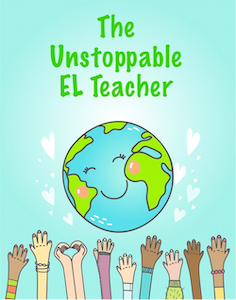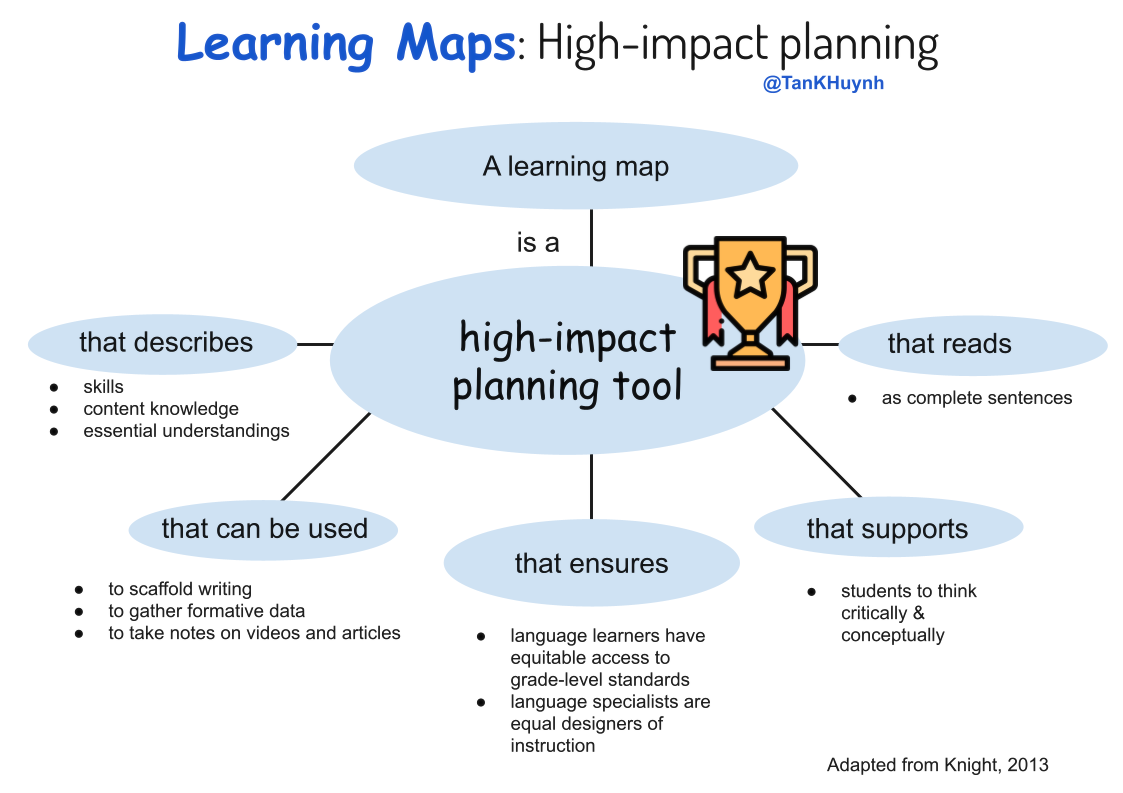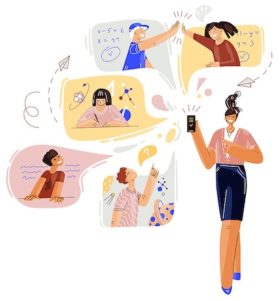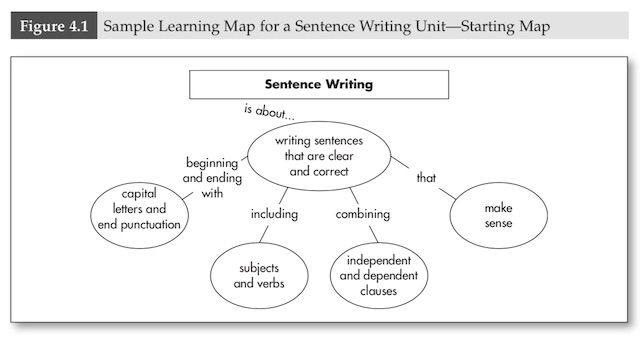Use Learning Maps for High Impact Planning
A MiddleWeb Blog

There’s a table with boxes for components such as the standards, essential understanding, driving questions, line of inquiry, approaches to learning and types of thinking, and other teacher jargon items.
This may feel satisfying and sophisticated when completed (should we ever have time to do that). However, as Dr. Jim Knight – a global leader in effective teaching and instructional coaching – tells us: simplicity is the highest form of sophistication. Here’s more about how to keep unit planning simple.
As described in Knight’s book High-Impact Instruction (2013), a learning map is a sophisticated, user-friendly tool that can help you visualize the most essential parts of your unit plan.
In contrast to laborious, chunky, text-crammed tables, a learning map cuts out all the fatty parts of planning your unit and leaves the leanest, most useful parts intact.
The readability of a learning map
Once you have created your unit planner using the popular table format, you can then transfer key parts into a learning map. At first glance, a learning map looks like a concept map. However, the difference in a learning map is that it reads like a series of complete sentences while a concept map just has disconnected nodes not meant to be read together.


A co-planning tool
Since a learning map contains the answers to the essential understandings and skills in a unit, language specialists can use it as a co-planning tool. For me personally, I create a learning map for each unit. When I plan with my colleague, we always have the learning map out to identify:
- where we are in the unit
- the content students have to learn, and
- the skill(s) we have to teach
In other words, we can decide collectively who teaches what to whom.
Often language learners are provided with a watered-down curriculum, which further widens the achievement and opportunity gap (Staehr Fenner & Snyder, 2017). Fortunately, learning maps are equity tools for learning. As they address the content, skills, and essential questions of the unit, learning maps (used well and often) help ensure that language learners have access to rigorous, grade-level standards and chances to engage in conceptual and higher-level thinking.
Learning maps elevate language specialists from being aides to being equal designers of instruction. As you co-create the learning map with your colleagues, you gain greater clarity about the content and the skills that will be taught, which leads to greater student achievement (Fisher, Frey, & Hattie, 2016). As you collaborate, you get to share the decision-making process, which more fully integrates you into the class and leads to opportunities to co-teach.
Because co-planning occurs only once a week for me, I can look at the learning plan before going into class to get a quick reminder of what students are learning and to determine how I can best support instruction.
A flexible tool with students, too
Though learning maps are intended as a teacher tool, they can also be tools that students can use to take notes as they watch a video or read an article because they provide students with a structure for capturing the main idea and the important details. As students create their learning maps, they visually synthesize the resource into topics and form connections between ideas.

Lastly, learning maps can scaffold writing as students use them as an outline for their reports and essays. Each node is another topic to discuss, and the organization of the mind map already provides the flow for the essay.
As for teachers, we can use student-generated mind maps to assess their understanding of the content. Those mind maps can essentially provide formative data as students have visually displayed their understanding. Teachers can also use the mind maps as a jumping off point for a conference.
We’re all looking for ways to simplify our planning while increasing its effectiveness. Incorporating these quick-to-prepare, visually appealing learning maps in your planning is a great way to do that.
In addition to clarifying and condensing the essential parts of your unit planning, learning maps naturally guide co-planning between the content teacher and language specialist. And when we can work together easily, we will work together more.
Resource
Download this excerpt from Chapter 4 of Dr. Knight’s High-Impact Instruction (Corwin) for a detailed description of how and why to create a learning map. (Source: “Mapping Mastery,” Loyola Academy)

References
Fisher, D., Frey, N., & Hattie, J. (2016). Visible learning for literacy, grades K-12: Implementing the practices that work best to accelerate student learning. Thousand Oaks, CA: Corwin Literacy.
Knight, J. (2013). High impact instruction: A framework for great teaching. Thousand Oaks, CA: Corwin Literacy.
Staehr Fenner, D., & Snyder, S. (2017). Unlocking English learners potential: Strategies for making content accessible. Thousand Oaks, CA: Corwin Literacy.

































